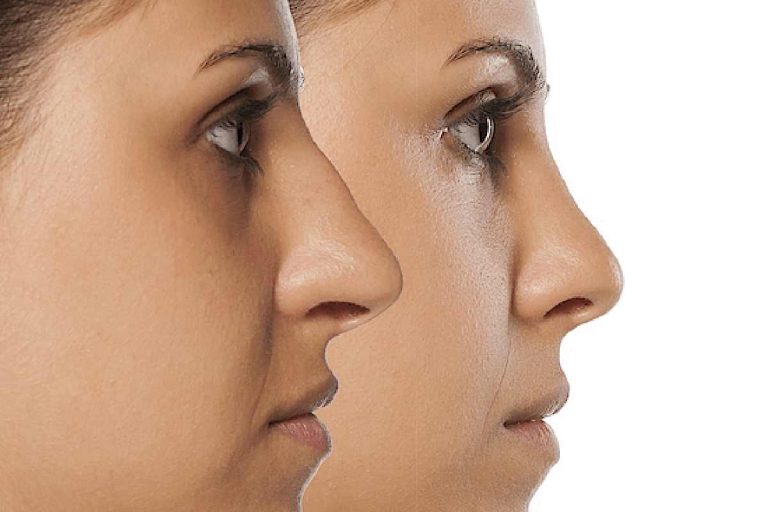If you’ve been contemplating a nose job for health or aesthetics, you’ve likely encountered the terms “Septoplasty” and “Rhinoplasty.” While they might sound similar, they serve different purposes. Let’s explore what sets these two surgeries apart, helping you make an informed decision about your health and wellness journey.
Table of Contents
What is Septoplasty?
Imagine breathing freely, without any blockages. That’s the goal of Septoplasty. It’s a surgical procedure to fix a deviated septum – the wall between your nasal passages. If you’ve been plagued by breathing issues, frequent sinus infections, or snoring, Septoplasty might be the beacon of hope you’ve been searching for.
Benefits of Septoplasty
Imagine waking up each morning and taking a deep, unobstructed breath. This is not a reality for many due to a deviated septum, which can significantly impact the quality of life. Septoplasty, a surgical correction of this condition, offers numerous benefits beyond simply breathing easier. Here are a few key advantages:
- Improved Breathing: The primary benefit of Septoplasty is the dramatic improvement in nasal airflow, making breathing easier day and night. This can be particularly life-changing for those who have struggled with breathing difficulties for years.
- Enhanced Sleep Quality: Many patients find that correcting a deviated septum leads to better sleep. Issues like snoring and sleep apnea can be mitigated, resulting in more restful nights and less daytime fatigue.
- Decreased Sinus Infections: Septoplasty can also reduce the frequency and severity of sinus infections by improving nasal airflow. Proper sinus drainage decreases the likelihood of infection and can alleviate chronic sinusitis symptoms.
- Improved Sense of Smell and Taste: Improved airflow enhances the ability to smell, which in turn can improve taste. Patients often only realize what they’ve been missing after their surgery.
- Overall Health Benefits: Improved sleep, fewer infections, and better breathing improve health. Patients may have more energy and fewer health issues related to poor airway function.
What is Rhinoplasty?
Rhinoplasty, commonly known as a “nose job,” is often associated with cosmetic surgery. However, it can also correct functional issues.
Benefits of Rhinoplasty
Rhinoplasty Turkey, while often considered for its cosmetic benefits, can also offer functional improvements. Here’s a look at the multifaceted benefits of undergoing Rhinoplasty:
- Aesthetic Confidence: For many, the most significant benefit is the boost in self-esteem. This can lead to improved social interactions and personal satisfaction.
- Functional Improvements: Rhinoplasty isn’t solely cosmetic; it can correct structural issues that impede breathing. For example, fixing a deviated septum or reducing turbinates can improve airflow, much like Septoplasty.
- Facial Symmetry: Rhinoplasty can enhance facial harmony by adjusting the size, shape, and position of the nose to complement other facial features better, achieving a more balanced appearance.
- Psychological and Emotional Benefits: The psychological impact of correcting perceived imperfections or long-standing insecurities should be considered. Many patients report significant improvements in mental health and well-being.
- Customization: Rhinoplasty offers a high degree of customization, allowing patients and surgeons to work closely to achieve a desired outcome that addresses aesthetic and functional concerns.
Comparing Septoplasty and Rhinoplasty
While Septoplasty and Rhinoplasty may seem similar at first glance, they serve different purposes and offer unique benefits:
- Purpose and Goals: Septoplasty focuses on improving nasal function by correcting a deviated septum, while Rhinoplasty is often pursued for cosmetic reasons but can also include functional improvements.
- Procedure and Recovery: Septoplasty is generally a straightforward procedure aimed at the septum, focusing on internal changes, often resulting in quicker recovery. Rhinoplasty can be more complex, involving changes to bone and cartilage, and typically has a longer recovery period due to the external modifications.
- Potential Results: Septoplasty results are mostly internal, with the main benefit being improved breathing. Rhinoplasty, on the other hand, can dramatically change the nose’s appearance and improve breathing functionality, depending on the scope of the surgery.
Can Septoplasty and Rhinoplasty Be Combined?
Combining the procedures can be more efficient and cost-effective, requiring only one surgery and recovery period. Patients can enjoy improved nasal function and an enhanced appearance, making it a comprehensive solution for those with functional and cosmetic nasal issues.
However, it’s essential to consult with a skilled surgeon who can assess whether this combined approach is suitable for your specific needs and goals.
Understanding the differences between Septoplasty and Rhinoplasty is crucial for anyone considering nasal surgery. By carefully considering your goals and consulting with experienced professionals, you can make an informed decision that aligns with your health and aesthetic aspirations.
Visit Flymedi, your go-to marketplace for reviewing and comparing top-rated clinics worldwide. Discover the perfect clinic that aligns with your health, beauty, and wellness goals today. Click here to start your journey to confidence with Flymedi!


